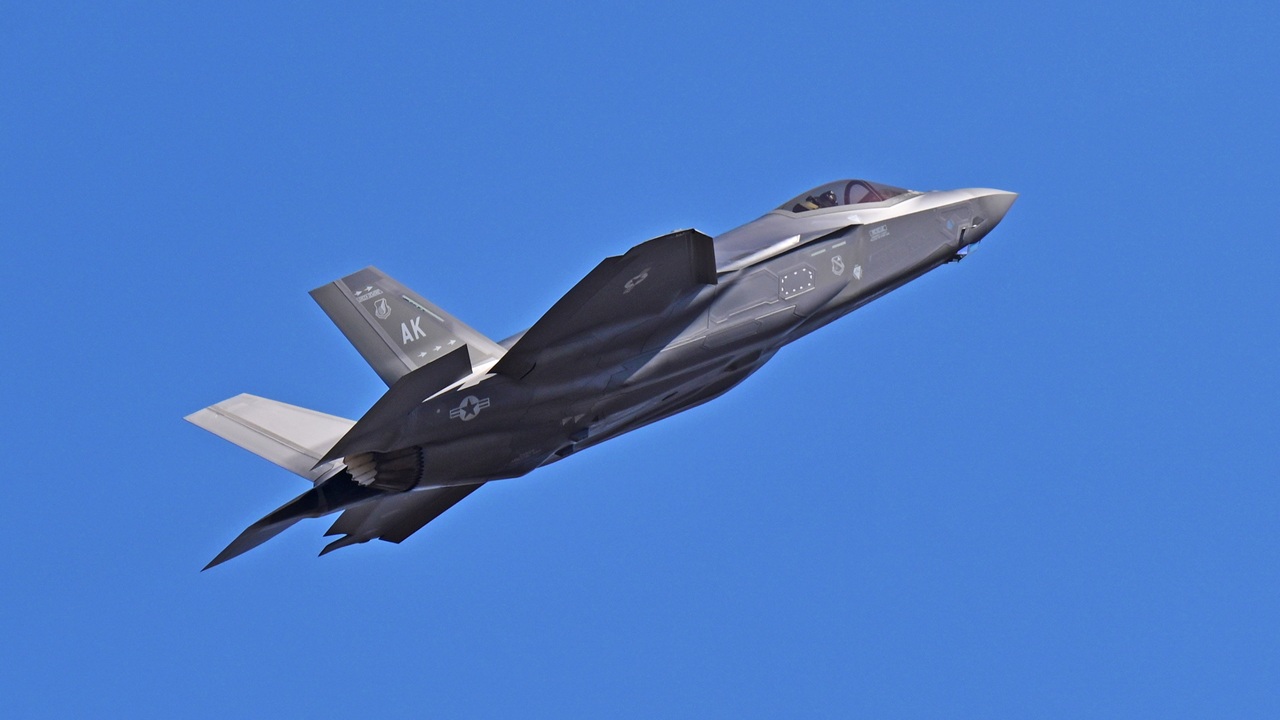
Why Lockheed Martin Wants to Upgrade the F-35
Facing defense cuts and NGAD setbacks, Lockheed Martin is pitching an enhanced F-35 as a cost-effective “bridge” to sixth-gen fighters, reusing advanced tech while managing significant financial losses.
For fiscal year 2026 (FY26), which begins on October 1, 2025, the United States Department of Defense (DoD) has committed to purchasing fewer Lockheed Martin F-35 Lightning IIs. The US Air Force will currently receive just two dozen F-35As, the conventional takeoff and landing variant, while the US Navy and US Marine Corps are also reducing the number of F-35Cs, the carrier-based models. The Marine Corps will also likely scale back its acquisition of the short takeoff vertical landing (STOVL) F-35B fighter.
Aerospace giant Lockheed Marin saw its profits take a nose dive, plunging by nearly 80 percent, as the company announced a pretax loss of $1.6 billion, “mainly linked to a classified program within its Aeronautics segment,” Reuters reported.
It doesn’t take a sleuth to determine that the “classified program” was likely tied to the Pentagon’s sixth-generation aircraft. Lockheed Martin was eliminated from the US Navy’s F/A-XX program earlier in March, and just weeks later, the US Air Force announced that Boeing had been awarded the contract to build the F-47, the centerpiece of the manned aircraft in the Next Generation Air Dominance (NGAD) program.
Even if it is something else, the losses were considered significant, and the company has introduced a “risk-identification and corrective action plan.”
The F-35 Will Be Upgraded Because the F-47 Isn’t Ready Yet
In an earnings call with investors on Tuesday, Lockheed Martin CEO James Taiclet acknowledged the “criticality” of the classified program and said, “We will continue to ensure that every bid price proposal and contract structure does not introduce outsized or unbounded future risk.”
Moreover, Taiclet once again pitched the idea that an upgraded and enhanced F-35 could serve as a “bridge” from the fifth-generation to the sixth-generation fighters, highlighting the fact that the Boeing F-47 could be more than a decade away from entering service.
The aerospace chief argued that the F-35 could be upgraded and enter service far sooner.
“We’re gonna port a lot of our own NGAD R&D over the F-35 and potentially the F-22 as well,” Taiclet explained. “And striving to get 80 percent effectiveness of sixth generation, both in stealth and other aspects. At 50 percent of the cost. Per unit. All in with R&D and nonrecurring.”
Taiclet added that the F-35 remains the only fifth-generation aircraft in production and has been proven in combat. However, it could be argued that Russia’s Sukhoi Su-57 (NATO reporting name Felon) is believed to be in initial low-rate production (ILRP), and that Moscow has closed a deal to sell the jet to Algeria.
It certainly isn’t the same as the more than 1,100 F-35s that are in service worldwide, but Lockheed Martin doesn’t have quite the monopoly that the company’s chief executive would imply.
In addition, China has introduced its Chengdu J-20 Mighty Dragon and the Shenyang J-35. Neither has been produced in significant numbers; however, there are other fifth-generation fighters in service.
It is also equally important to note that the F-35 is Lockheed Martin’s second fifth-generation fighter, after the F-22 Raptor. As a result, the company has had a considerable head start, and it could be well-suited to bridging the gap with an enhanced F-35.
This so-called Ferrari version could incorporate technology Lockheed Martin already developed.
“We did bid on NGAD,” Taiclet added. “Everyone knows that we weren’t selected, but the pivot that we made is one that we’re taking incredibly seriously, which is, how do we create a best-value bridge from today’s fifth generation to sixth generation?”
Taiclet said that the technologies it developed for NGAD could be successfully integrated into the F-35.
“That’s the best value option for the US government going forward. It’ll be the only one I’m aware of that can make that bridge over, you know, call it five plus maybe even ten years,” he continued.
The unanswered question is exactly what would be involved with such a supersized upgrade of the F-35. It is already known that Lockheed Martin had deliveries of the Lightning II placed on hold for more than a year due to issues with the Technology Refresh-3 (TR-3), a major hardware/software upgrade. The Pentagon halted acceptance until last summer after a truncated version was released.
Yet, the final version’s release is still pending, and aircraft with the truncated TR-3 can only be used in training and aren’t combat-certified.
Skunk Works May Unveil a New Jet
Taiclet said the company’s famed Skunk Works had undertaken another “highly classified” aeronautical program, but the details were not disclosed.
This has only led to speculation about whether it is tied to the F/A-XX and/or NGAD programs, or something else entirely.
“This is a highly classified program that can only be described as a game-changing capability for our joint US and international customers, and therefore it must be successfully fielded,” said Taiclet.
Should it be a third program, then the stakes could be even higher for Lockheed Martin. It already struck out twice with the sixth-generation efforts. That may be why there is a push to salvage some of the effort with a fifth-generation-plus aircraft.
Or it could be the F-55, the twin-engine version of the F-35 that President Donald Trump teased early this year. Aviation analysts dismissed such a notion, but it may already be underway.
About the Author: Peter Suciu
Peter Suciu has contributed over 3,200 published pieces to more than four dozen magazines and websites over a thirty-year career in journalism. He regularly writes about military hardware, firearms history, cybersecurity, politics, and international affairs. Peter is also a Contributing Writer for Forbes and Clearance Jobs. He is based in Michigan. You can follow him on Twitter: @PeterSuciu. You can email the author: Editor@nationalinterest.org.
Image Credit: Shutterstock/AjayTVM.
The post Why Lockheed Martin Wants to Upgrade the F-35 appeared first on The National Interest.


















